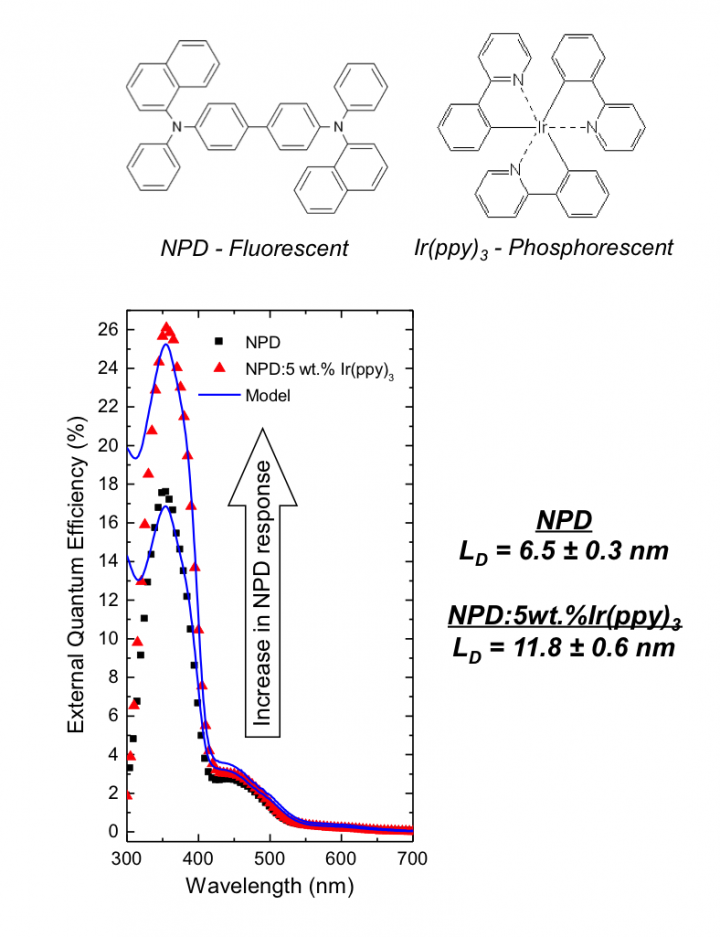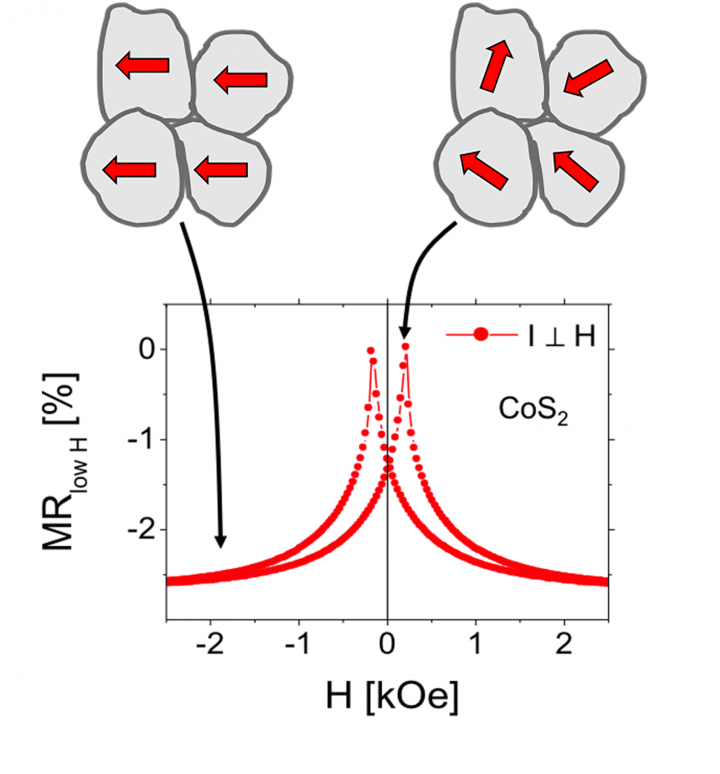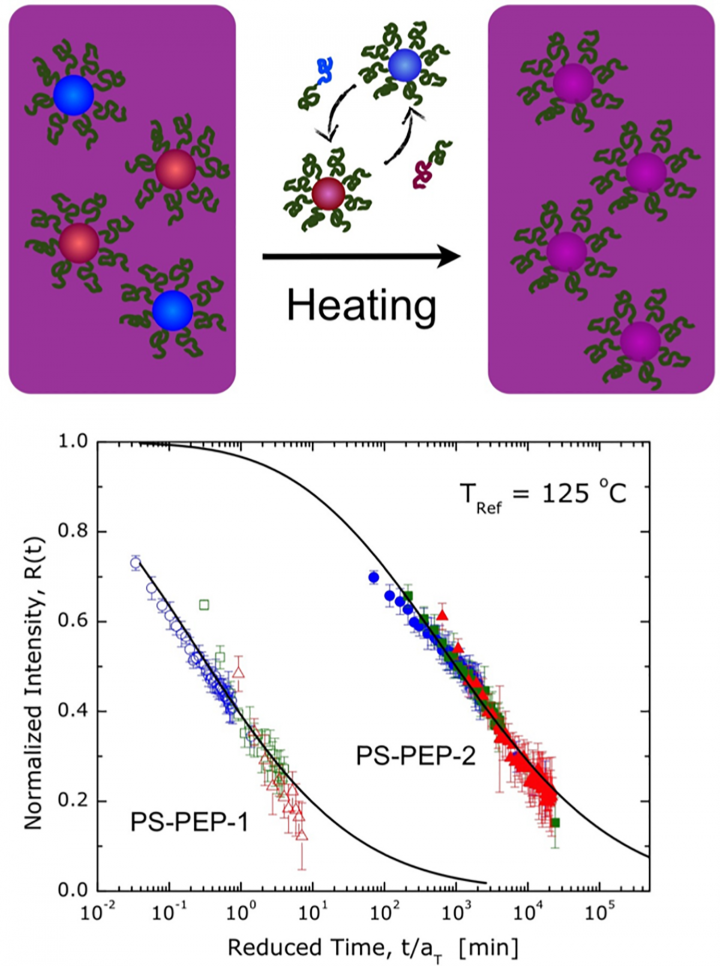Graduate student Wade Luhman has demonstrated a route to enhance the short exciton diffusion length (LD) of organic semiconductors by combining fluorescent and phosphorescent materials into a single electron donating thin film.

Graduate student Wade Luhman has demonstrated a route to enhance the short exciton diffusion length (LD) of organic semiconductors by combining fluorescent and phosphorescent materials into a single electron donating thin film.

Highly spin-polarized magnets have the potential to radically improve the performance of many spintronic devices.

Using small-angle neutron scattering, we investigated the mechanism of molecular exchange in spherical micelles formed by diblock copolymers in an organic solvent.
Research funded in part by the MIT MRSEC has led to a discovery of one-way photonic behavior. A team made up of MIT physicists Zheng Wang, research scientist in MIT's Research Laboratory
Polyurethanes have many properties that qualify them as high performance polymeric materials, but they still suffer from mechanical damage. We report the development of polyurethane networks that exhibit self-repairing characteristics upon exposure to ultraviolet light. The network consists of an oxetane-substituted chitosan precursor incorporated into a two-component polyurethane.
All to enhance students’, teachers’ and public’s recognition & appreciation..
of the state-of-the-art Science and Technology at the materials/bio interface;
.. for Students to seek career in Science and Engineering
A team of researchers, led by Yoel Fink of the MIT MRSEC, has developed light-detecting fibers that can be woven together to create a flexible, basic camera. These fibers are each less than a millimeter in diameter,
Graduate students at the University of Arkansas bring cutting edge technology to local middle school students and allow them to explore the world of nanoscience in real-time.